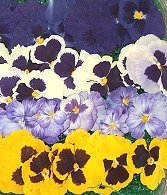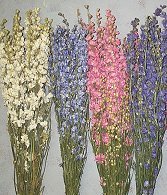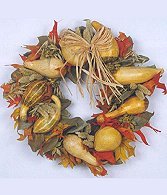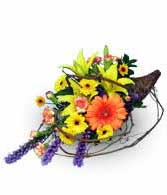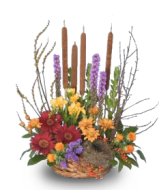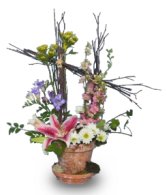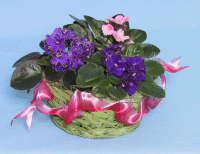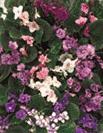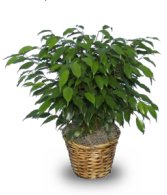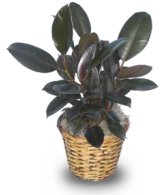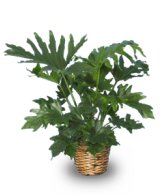The date has been set. The gown has been fitted. Cakes have been tasted and invitations ordered. Now it’s time to plan the flowers and all the gorgeous, detailed accessories that will make your wedding memorable. It really is true that the beauty lies in the details – all those extra little touches that help personalize the event and make it stand out as your own. And no one is better equipped to help guide you in your selection of wedding accessories than your professional florist – a qualified wedding specialist. From head to toe, your wedding designer can create unique and appealing floral fashion accessories to complement any style of dress and décor eye-catching designs that will captivate your guests and delight the members of wedding party.
For the bride, of course, the most obvious accessory is her bouquet. Today’s trends allow for practically any shape or style, but wedding bouquets in general tend to be compact and crowded with flowers that express a sense of richness and opulence. The addition of delicate accessories such as tiny faux jewels or decorative wire dancing over the surface of the bouquet creates movement and sparkle, making a very fashionable statement. The stems of hand-tied bouquets may be wrapped together in a luxurious, six-inch wide ribbon, establishing a tailored look with the addition of a row of pearl-headed corsage pins inserted along the seam. In a mono-botanical (all one type of flower) bouquet, stems of bold flowers such as callas, gerberas or French tulips may be individually wrapped with narrow, dressy ribbon (perhaps one with a metallic weave), becoming a sophisticated accessory to the design that strengthens its appeal.
To read more about wedding bouquet trends, see our previous newsletter, “Wedding Day Wishes”
Beyond the bouquet, many brides are choosing to wear flowers in their hair in lieu of a veil. Depending on the hairstyle, flowers may be assembled into a delicate circlet to enwrap a bun, or they can be glued to barrettes and easily secured into the hair as desired. Naturally, the choice of flowers for these hair accessories should coordinate with the blossoms in the bride’s bouquet.
Shoes, as well, are a prime target for floral embellishment, particularly when the wedding dress has a shorter hemline. A single flower or two may be glued to the top front edge of the shoe, or a diminutive and delicate garland may wrap the back. Since the bride’s back is to the congregation throughout much of the wedding ceremony, this little accessory can be a delightful surprise for the guests. If the wedding is more formal in tone, the bride may choose to wear gloves, which could have buttons replaced or simply suggested by a row of tiny miniature rosebuds.
Decorative purses are the rage among members of the wedding party this season. Whether they are truly functional as purses or only ‘pretend’ imitations, little floral handbags are being carried as fashion accessories by bridesmaids, flower girls, and even the mothers of the bridal couples. For example, an inexpensive clutch or small pocketbook can be completely covered in foliage such as galax leaves, leaving the lip or edge of the purse to be embellished with delicate-appearing yet sturdy flowers, such as dendrobium orchid blossoms or miniature cymbidiums. A better quality purse may have only the edge decorated with a removable garland of flowers. An imitation handbag can be fashioned from craft foam and similarly covered in moss, foliage or petals, with a handle made of ribbon or artificial vines. A bit of saturated floral foam or a few water tubes are then used to secure the fresh flowers that appear to be brimming from within. Such a purse is a darling accessory for a flower girl, and can be decorated to coordinate with the small pillow, similarly embellished, to be carried by the ring bearer.
Let’s not leave the other guys out of the picture! While there aren’t quite so many opportunities to create floral fashion accessories for the male members of the wedding party, the boutonniere has evolved a great deal from the traditional rose bud in the lapel. Today’s dapper groomsman may wear a boutonniere that’s a work of art, resembling a teeny-tiny bouquet or embellished with flashy rhinestones and decorative beading wire. Or, in a departure from the norm, the boutonniere may be replaced with a pocket square: essentially an index card with small florets or flower petals glued across the short edge. The card is inserted into the jacket pocket with the floral accent showing above the edge. The possibilities are practically limitless with this new kind of stylish accessory.
Fashionable wedding accessories extend beyond the attire of the bridal party. The cake table, for instance, can provide an opportunity for some detailed enhancements. Because the wedding cake is a focal point for the reception, guests are able to see it at close range. Thus, the details of your decorating scheme can be appreciated. Cake knives and serving pieces are easily embellished with a few delicate blossoms and a bit of narrow-width, wired ribbon. The ribbon provides a surface onto which the flowers, foliage and other elements can be directly glued without damaging the utensils or contaminating the food. Toasting glasses may be decorated in a similar manner.
Likewise, the guest book signing area presents another opportunity for wedding accessories. Many couples are choosing to use this area to display framed photographs of themselves, individually as well as coupled, as a way of personalizing the celebration. Another suggestion is to place photographs from the weddings of the bridal couple’s parents here as a way to honor the previous generation. It’s a nice touch that will mean a lot to so many people.
With years of experience from which to draw upon, your local professional florist will have a lot of other ideas for accessories to personalize your wedding celebration. It is details such as these that both you and your guests will remember the most, and who better to help you create those memories than a skilled wedding specialist. Gather some of your own thoughts together, perhaps looking through bridal magazines and books, and call ahead for an appointment. Your florist will want to be able to devote as much time as is necessary during the initial consultation to understand exactly what is required to make your wedding dreams come true.
Planning a wedding? Need more ideas, take a look at Planning Wedding Flowers or Trend in Wedding Bouquets.
The perfect wedding ideas from Beautiful Wedding Flower Pictures to Decorating Ideas for a Wedding Reception.
For Fall wedding ideas, check out Fabulous Wedding Flowers and Roses and More Roses.


 Find Your
Find Your 

 Now, mistletoe is something else altogether. Mistletoe is actually a parasite – it draws its nourishment from the resources of another tree or shrub upon which it grows, sending its roots into the host plant’s vascular system to obtain nutrients. There are two types of mistletoe. The one most seen in Christmas decorations in this country is the North American mistletoe, (Phoradendron flavescens). The other, slightly smaller type of mistletoe (Viscum album) is of European origin. Both mistletoes have pale green, leathery leaves and produce small, sticky white berries which are considered poisonous to humans. The European mistletoe grows mostly on apple trees, although it may rarely be seen growing on oaks (a significant detail).
Now, mistletoe is something else altogether. Mistletoe is actually a parasite – it draws its nourishment from the resources of another tree or shrub upon which it grows, sending its roots into the host plant’s vascular system to obtain nutrients. There are two types of mistletoe. The one most seen in Christmas decorations in this country is the North American mistletoe, (Phoradendron flavescens). The other, slightly smaller type of mistletoe (Viscum album) is of European origin. Both mistletoes have pale green, leathery leaves and produce small, sticky white berries which are considered poisonous to humans. The European mistletoe grows mostly on apple trees, although it may rarely be seen growing on oaks (a significant detail).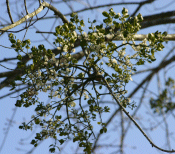 To the Druids, who were the high priests of the ancient pagan religions, the oak tree was sacred, and any mistletoe that was found growing in an oak tree was doubly sacred. During the winter solstice festival of Saturnalia (in honor of Saturn, the Roman god of agriculture), mistletoe was ceremonially harvested from the oak trees with a golden sickle, amid prayers that the recipients of the mistletoe would prosper. Embracing or kissing under the mistletoe was first associated with the Saturnalia festival as a sign of peace and that all bad feelings of the past year were forgiven. Later it became associated with marriage ceremonies as a sign of fertility.
To the Druids, who were the high priests of the ancient pagan religions, the oak tree was sacred, and any mistletoe that was found growing in an oak tree was doubly sacred. During the winter solstice festival of Saturnalia (in honor of Saturn, the Roman god of agriculture), mistletoe was ceremonially harvested from the oak trees with a golden sickle, amid prayers that the recipients of the mistletoe would prosper. Embracing or kissing under the mistletoe was first associated with the Saturnalia festival as a sign of peace and that all bad feelings of the past year were forgiven. Later it became associated with marriage ceremonies as a sign of fertility.